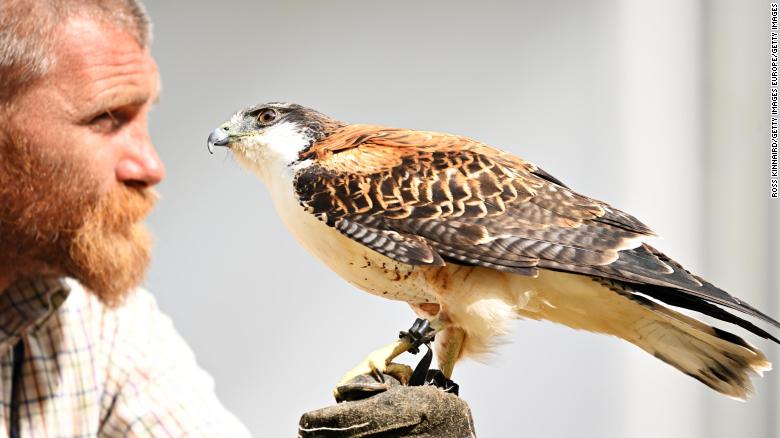
CNN) – Every golfer playing at the Open Championship this week will be thrilled to see an eagle. Yet so too will thousands of fans.
Situated on the east coast of Scotland, St Andrews may be affectionately known as the ‘home of golf,’ but it’s a residence shared by some highly disruptive roommates: seagulls.
While spectators politely observe the quiet signs held up by stewards as players take their shots, the seabirds — milling above the famous yellow leaderboard at the 18th hole — make an impressive racket.
As they circle for food, the fear of being the unfortunate landing spot for their waste is a constant anxiety, with several staff and fans already falling foul.
Yet in the skies over the nearby food court and grandstands, not a single gull in sight. This is the result of some nifty recruitment by event organizers: four birds of prey.
Fans navigating the Old Course across the week will grow accustomed to seeing a pair of hawks — a red-backed and a Harris — an Indian eagle-owl and a tawny eagle.
Named Enya, Nailer, Sage and Fearnley respectively, the guardians perch on their handler’s gloves to ward off seagulls from the picnic area, as well as the 1st and 18th grandstands.
The birds come from the nearby Elite Falconry — hired for the event — with handler John on lunchtime duty for Thursday’s opening round after a flurry of seagull activity around the first tee during the early morning.
“Without us here, the seagulls would literally be divebombing people trying to steal their food,” John told CNN Sport.
With seagulls not a typical cuisine of the four birds of prey, they don’t fly around the course and instead sit calmly on their handler’s glove for the duration of their watch, their presence alone enough to stave off the unwanted visitors.
Golf is not the only sport to call on the aid of birds of prey at events. At Wimbledon, Rufus the Hawk has long been a local tennis hero for his efforts at the All England Tennis Club.




